 W
WAll Things Betray Thee, by Gwyn Thomas, is a novel of early industrialism in South Wales. It was first published in 1949, and was republished in 1986, with an introduction by Raymond Williams. The book was later republished as part of the Library of Wales series by Parthian Books in 2011.
 W
WArabella is a Regency romance novel written by Georgette Heyer. It records the plight of a relatively poor girl from the English gentry who captures the attention of a very wealthy man by claiming to be an heiress; although he disbelieves her, he is amused by her presumption and character. The story is set in the spring of 1817.
 W
WThe Boat is a 1949 novel by the British writer L.P. Hartley. An English writer returns home from Venice, and takes residence in a house by a river where he can indulge his passion in rowing.
 W
WBrat Farrar is a 1949 crime novel by Josephine Tey, based in part on The Tichborne Claimant.
 W
WCordelia is a 1949 historical novel by the British writer Winston Graham. He wrote it for the Book of the Month Club and enjoyed commercial success in the United States. It is set in Manchester in the 1860s.
 W
WCost Price is a 1949 adventure novel by the English author Dornford Yates, the eighth and last in his 'Chandos' thriller series. It serves as a sequel to his 1932 novel Safe Custody. The book was published in the US under the title The Laughing Bacchante.
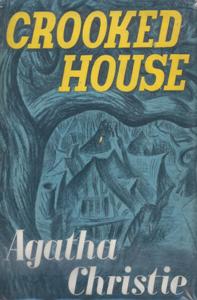 W
WCrooked House is a work of detective fiction by Agatha Christie first published in the US by Dodd, Mead and Company in March 1949 and in the UK by the Collins Crime Club on 23 May of the same year.
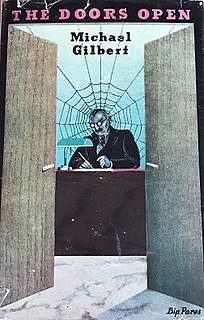 W
WThe Doors Open, published by Hodder and Stoughton in England in 1949 and by Walker and Company in the United States in 1962, is the third novel by the British mystery and thriller writer Michael Gilbert. Gilbert, who was appointed CBE in 1980, was a founder-member of the British Crime Writers' Association. The Mystery Writers of America named him a Grand Master in 1988 and in 1990 he was presented Bouchercon's Lifetime Achievement Award. Like his first two books, it features Inspector Hazlerigg, although not in a major role. It is, in fact, a very diffuse book in terms of its characters. Angus McMann, who was the chief protagonist of Gilbert's previous book, They Never Looked Inside, is briefly mentioned on the first page and makes a later appearance as a minor character. Hazlerigg does not appear until page 24 and thereafter only at intervals throughout the book. There are, in actuality, three other protagonists who, along with Hazlerigg, share the role of driving the narrative. One is Noel Anthony Pontarlier Rumbold ("Nap"), a junior solicitor in his father's London firm. Nap had spent four months on dangerous missions with the French maquis in occupied France during the war and is, apparently, still a Lieutenant-Colonel, D.S.O. A few years later he will be a main character in Gilbert's well-received novel Death Has Deep Roots. Patrick (Paddy) Yeatman-Carter, an acquaintance of Nap's, is another lead character, as is his uncle, Alfred Lord Cedarbrook, a man with an astonishing background, much sought after by both the Foreign Office and the War Office during WWII and now, apparently, still affiliated with the Secret Service. As well as being a linguist, explorer, soldier, and diplomat, he also has a law degree. All three of them, to one degree or another, carry out private investigations, sometimes with the backing of Hazlerigg, sometimes not.
 W
WFive Get into Trouble is the eighth novel in The Famous Five series by Enid Blyton. It was first published in 1949. In this novel, Dick gets kidnapped, mistaken for another boy whose name is Richard. The Famous Five track him down to a lonely, out-of-the-way house, but they are seized and imprisoned too.
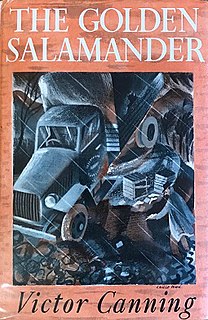 W
WThe Golden Salamander is a 1949 thriller novel by the British writer Victor Canning.
 W
WThe Great House is a children's historical novel by Cynthia Harnett. It was first published in 1949 with illustrations by the author.
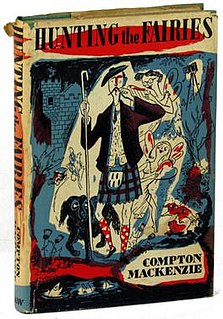 W
WHunting the Fairies is a 1949 comedy novel by the British writer Compton Mackenzie. It features some of the characters who had previously appeared in The Monarch of the Glen.
 W
WThe Islands of Unwisdom is an historical novel by Robert Graves, published in 1949. It was also published in the UK as The Isles of Unwisdom.
 W
WThe Journeying Boy is a 1949 mystery novel by Michael Innes. It was number 52 in The Top 100 Crime Novels of All Time list, despite not involving Innes's main character, Sir John Appleby.
 W
WLittle Boy Lost is a dramatic novel by Marghanita Laski that was published in 1949. It was republished in 2001 by Persephone Books.
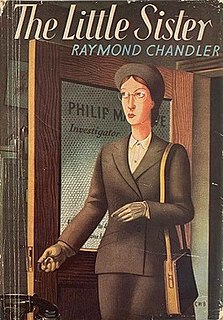 W
WThe Little Sister is a 1949 novel by Raymond Chandler, his fifth featuring the private investigator Philip Marlowe. The story is set in Los Angeles in the late 1940s. The novel centres on the younger sister of a Hollywood starlet and has several scenes involving the film industry. It was partly inspired by Chandler's experience working as a screenwriter in Hollywood and his low opinion of the industry and most of the people in it. The book was first published in the UK in June 1949 and was released in the United States three months later.
 W
WLove in a Cold Climate is a novel by Nancy Mitford, first published in 1949. The title is a direct quotation from George Orwell's novel Keep the Aspidistra Flying (1936).
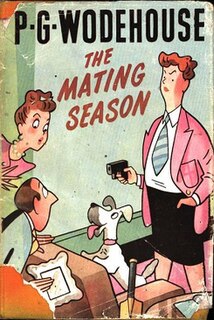 W
WThe Mating Season is a novel by P. G. Wodehouse, first published in the United Kingdom on 9 September 1949 by Herbert Jenkins, London, and in the United States on November 29, 1949 by Didier & Co., New York.
 W
WThe Miracle at Cardenrigg is a novel by the Scottish writer Tom Hanlin published in 1949 by Victor Gollancz in the UK and Random House in the US.
 W
WMurder Most Royal (1949) is an historical fiction novel by Jean Plaidy.
 W
W,The Mystery of the Pantomime Cat, published 1949, is the seventh novel in the Five Find-Outers'Or mystery' series written by Enid Blyton.
 W
WNineteen Eighty-Four: A Novel, often published as 1984, is a dystopian social science fiction novel by English novelist George Orwell. It was published on 8 June 1949 by Secker & Warburg as Orwell's ninth and final book completed in his lifetime. Thematically, Nineteen Eighty-Four centres on the consequences of totalitarianism, mass surveillance, and repressive regimentation of persons and behaviours within society. Orwell, himself a democratic socialist, modelled the authoritarian government in the novel after Stalinist Russia. More broadly, the novel examines the role of truth and facts within politics and the ways in which they are manipulated.
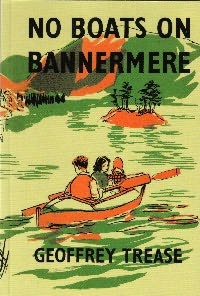 W
WNo Boats on Bannermere is a 1949 children's novel by Geoffrey Trease, and the first of his five Bannerdale novels. They are school stories set in Cumberland, in the Lake District.
 W
WNoddy is a fictional character created by English children's author Enid Blyton, originally published between 1949 and 1963. Noddy was illustrated by the Dutch artist Eelco Martinus ten Harmsen van der Beek from 1949 until his death in 1953, after which the work was continued by Peter Wienk. Television shows based on the character have run on British television since 1955.
 W
WThe Parasites is a novel by Daphne du Maurier, first published in 1949.
 W
W]
 W
WSeven Days in New Crete, also known as Watch the North Wind Rise, is a seminal future-utopian speculative fiction novel by Robert Graves, first published in 1949. It shares many themes and ideas with Graves' The White Goddess, published a year earlier.
 W
WA Sort of Traitors is a 1949 thriller novel by the British writer Nigel Balchin.
 W
WSwing, Brother, Swing is a detective novel by Ngaio Marsh; it is the fifteenth novel to feature Roderick Alleyn, and was first published in 1949. The plot concerns the murder of a big band accordionist in London; the novel was published as A Wreath for Rivera in the United States.
 W
WTime of Hope is the first chronological entry in C. P. Snow's series of novels Strangers and Brothers, and the third to be published. It depicts the beginning of Lewis Eliot's life, with a childhood in poverty in a small English town at the beginning of the 20th century.
 W
WTo Every Man a Penny is a 1949 novel by Scottish writer Bruce Marshall. Two major characters in the novel, Gaston and Bessier, like the author himself, had legs amputated due to wounds suffered in World War I.
 W
WThe White South is a 1949 thriller novel by the British writer Hammond Innes. It is set on a factory ship operation in Antarctic Ocean.
 W
WA Wreath of Roses is a novel by Elizabeth Taylor published in 1949.